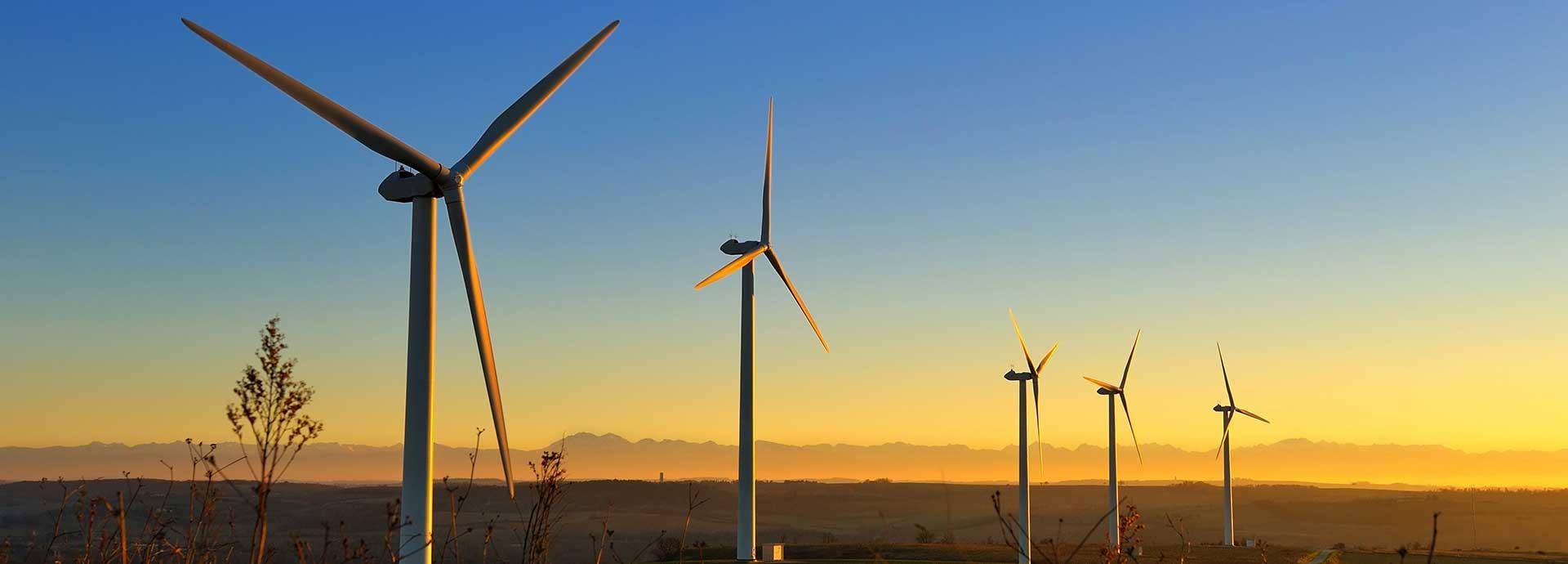

The European Commission has set a goal for Europe to become the world’s first carbon-neutral continent by 2050, and wind energy has an important role to play in this transformation.
Today, 14% of energy in Europe is produced by wind farms. The potential for this type of renewable energy is much higher, however.
Europe is already a world leader in the wind energy market, but the plans of the European Commission are even more ambitious. Offshore wind power generation is central to its plan for transition to a carbon-neutral economy by 2050. The goal to increase the offshore installed capacity from the current 20 GW up to 450 GW by 2050 are achievable, according to WindEurope, an association promoting the use of wind power on the continent. The key factors for success are the right spatial maritime planning along with investments in the offshore and onshore grid.
Creating clean energy and jobs
Wind farms remain one of the cheapest and cleanest sources of renewable energy available, and they create new jobs in the communities where turbines are installed.
Technologies such as Internet of Things (IoT) promise to make wind energy even more cost-efficient and reduce maintenance costs – an issue that is especially important for offshore farms, according to Alexander Vandenberghe, Research & Innovation Advisor at WindEurope.
“With IoT, each turbine will be able to communicate with the others, and the operator will be able to identify how to adjust each turbine in order to increase the output on the farm level,” Vandenberghe explains. “We are moving towards real-time, condition-based maintenance, when the condition of every component of a turbine can be measured in real time.”
This data would enable operators to adjust the workload and performance of any particular turbine and plan the maintenance process, so that a repair crew, once deployed to an offshore farm, could replace several components in different turbines at one time. The ROMEO project, an EU Horizon 2020 venture, is currently testing IoT technologies on several sites in the United Kingdom and Germany to reduce the maintenance costs and increase the overall efficiency of wind farms.
When it comes to the short-term outlook, a lot depends on the National Energy & Climate Plans of each individual EU member state as well as permitting issues. According to WindEurope, up to 90 GW of new wind energy capacity could be installed across Europe in the next five years, if national plans are extremely ambitious and the permitting processes improve significantly.
A promising investment from Google
One recent bit of positive news for the wind energy market was Google’s announcement in September 2019 to invest USD 2 billion in renewable energy. About half of the investments will be made in Europe, including large wind energy projects in Finland (255 MW) and Sweden (286 MW). The new wind projects will produce power for Google’s data center in Hamina, Finland.
“We are glad to see these long-term power purchase agreements (PPA) with Google,” says Marja Kaitaniemi, chairperson of the Finnish Wind Power Association.
More good news for wind power in Finland is the first domestic power purchase agreement between state-owned energy company Fortum and the refining company Neste, which signed a 12-year contract to purchase wind energy from the Kalax wind farm.
“It is a good sign. I have been expecting for years that there will be domestic buyers of wind power. In Finland, there is a big domestic energy demand from the industry,” says Kaitaniemi.
Wärtsilä is positive about these developments in Finland. The company develops technological solutions for data centres powered by renewable energy. In case of a gap between the data centre’s energy demand and wind and solar energy supply, Wärtsilä's flexible gas engine power plant can step in, dynamically adapting to the gap. This mode of operation is called “wind chasing” and it has been used by power plants based on gas engines for years.
“Our role is to provide flexibility and stability to the grid, which allows for more wind power and renewables,” says Anette Danielsson, Financial Analyst for Market Development at Wärtsilä Energy Business.
Wärtsilä is also doing modelling for flexible energy generation involving wind energy. This modelling is aimed at optimising power systems and finding the right balance between renewables and flexible gas plants. “By moving technology forward, Wärtsilä is working on making a renewable energy future possible,” says Danielsson.
Recently published research in the journal Energy Policy shows that Europe has enough space to install new onshore turbines that could theoretically generate enough energy to meet the energy demands of the whole world in 2050. Practically, however, this option has a number of challenges as it would require a huge amount of surface area and a massive expansion of transmissions systems – both of which involve substantial investment. At the moment, the most economical way of achieving carbon neutrality is a combination of renewables, storage, and solutions bringing flexibility. Because renewable sources are variable, the flexible thermal capacity can quickly step in when they are unavailable. Initially, this capacity will come from fossil-based fuels, but in the future, it will rely on renewable synthetic fuels.